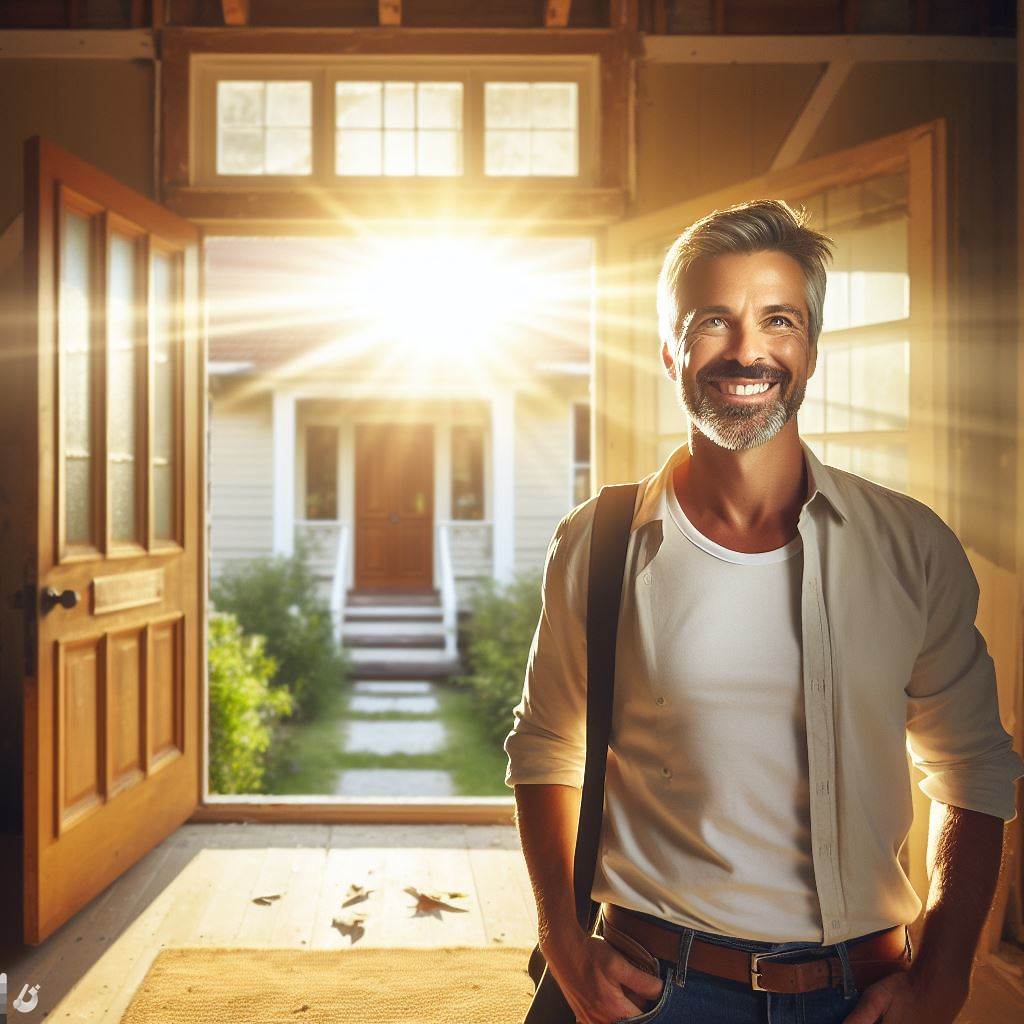Introduction
Revamping a vintage home holds a captivating charm that lures homeowners seeking to infuse a sense of history and character into their living space.
The idea of breathing new life into an outdated residence carries a nostalgic appeal that cannot be ignored.
Revamping a vintage home involves renovating and transforming an old, often historic, property into a modern living space while preserving its unique character, architectural features, and nostalgic aesthetic.
It requires a delicate balancing act between retaining the property’s authentic charm and integrating contemporary elements.
Embarking on the journey of revitalizing a vintage home unveils countless rewards, but it demands meticulous planning, thoughtful decision-making, and precise execution.
From considering the heritage of the property to selecting the right materials, revamping a vintage home is an intricate process that necessitates a keen eye for detail and a deep understanding of architectural preservation.
Whether the goal is to create a harmonious fusion of old and new or to showcase the historic grandeur of the property, revamping a vintage home is a labor of love that promises an enriching and gratifying experience for those willing to undertake the challenge.
Assessing the Vintage Home
A vintage home holds a certain charm and character that many people find appealing.
However, revamping such a home requires careful assessment to understand its current condition and identify potential challenges and opportunities.
This section will delve into the importance of assessing the vintage home, analyzing its architecture, layout, and unique features, and identifying potential challenges and opportunities.
Importance of assessing the current condition of the vintage home
- Before starting any revamping project, it is crucial to assess the current condition of the vintage home.
- This assessment helps determine the level of work needed, potential costs, and time required for the revamping process.
- An in-depth evaluation allows you to prioritize renovations, ensuring a smoother and more efficient project execution.
- Assessing the home’s condition also helps identify any structural issues that may need immediate attention to ensure safety.
- Understanding the home’s current state gives you a realistic view of what you can achieve with the revamping process.
Analyzing the architecture, layout, and unique features
- The vintage home’s architecture, layout, and unique features play a significant role in its overall appeal and potential.
- Studying the architectural style helps determine whether to preserve, restore, or incorporate modern elements.
- Assessing the layout allows for better planning of room rearrangement, adding functionality and flow to the living spaces.
- The unique features such as ornate moldings, original hardwood floors, or antique fixtures are a treasure to preserve.
- Understanding these aspects enables you to enhance the vintage charm while making necessary updates.
Identifying potential challenges and opportunities
- Renovating a vintage home presents both challenges and opportunities that should be carefully identified.
- Outdated electrical systems, plumbing issues, or inadequate insulation might require attention during the revamping process.
- However, such challenges provide an opportunity to modernize the home’s infrastructure for improved functionality.
- Identifying potential opportunities, such as hidden architectural gems, can inspire unique design choices.
- Recognizing challenges and opportunities ensures a comprehensive approach to revamping the vintage home.
Assessing a vintage home before revamping is of utmost importance.
It allows you to understand the current condition, analyze its architecture and layout, and identify potential challenges and exciting opportunities.
This comprehensive assessment serves as a foundation for a successful revamping journey.
Read: Backyard Bliss: Before & After Outdoor Renovations
Creating a Vision
Understanding the homeowner’s goals and preferences
Creating a vision for revamping a vintage home involves understanding the homeowner’s goals and preferences.
Transform Your Real Estate Decisions
Unlock personalized real estate insights crafted just for you. Get actionable advice designed to amplify your success.
Get StartedBy meeting with the homeowner, an open conversation can establish what they envision for their home.
It is crucial to ask open-ended questions and listen attentively to their ideas to gain insight into their design preferences.
During this process, the homeowner’s lifestyle, functionality requirements, and budget must be taken into account to manage expectations effectively.
Researching and gathering inspirations from various sources
Researching and gathering inspirations from various sources is an essential step in creating a cohesive vision for the revamp.
Utilizing online platforms like Pinterest and design blogs can provide a plethora of ideas and images to inspire the renovation.
Additionally, visiting local magazines, attending expos, and antique shopping can introduce unique decor concepts that tailor to the vintage aesthetic.
Photographing these sources of inspiration and compiling them in a visual library or mood board will aid in the organization of ideas.
Determining a cohesive design theme or style for the revamp
Once sufficient research has been conducted, determining a cohesive design theme or style becomes crucial.
Analyzing the homeowner’s preferences, inspirations, and the vintage nature of the home will guide the decision-making process.
It is important to consider the architectural elements, period details, and the original character of the home.
By identifying common threads such as color schemes, textures, or historical references, a design style that complements the vintage home can be established.
Discussing these findings with the homeowner will allow for finalizing a preferred design theme that aligns with their vision.
In fact, creating a vision for revamping a vintage home requires understanding the homeowner’s goals, researching inspirations, and determining a cohesive design theme.
By engaging in open conversations, gathering ideas from various sources, and considering the home’s original character, a detailed plan can be established.
Showcase Your Real Estate Business
Publish your company profile on our blog for just $200. Gain instant exposure and connect with a dedicated audience of real estate professionals and enthusiasts.
Publish Your ProfileDeveloping a clear vision will help guide the renovation process and ensure the homeowner’s satisfaction with the end result.
Budgeting and Financing
Creating a budget and securing financing are crucial steps in successfully revamping a vintage home.
The cost evaluation allows you to plan adequately, while setting a realistic budget ensures you allocate your resources wisely.
Exploring financing options can provide the necessary funds if your budget falls short.
Evaluating the cost of revamping a vintage home
When evaluating the cost of revamping a vintage home, start by thoroughly examining the property’s condition.
Look for any visible defects or structural issues that need immediate attention.
This evaluation will give you a clearer idea of the scope of work required and help you estimate the project’s cost.
After assessing the condition, consider the cost of necessary repairs and renovations.
Researching the market prices of similar projects in your area will give you a general idea of the potential expenses.
Make sure to include both material and labor costs in your calculations.
It’s crucial not to overlook unexpected expenses that may arise during the revamp process.
These can include additional repairs or unforeseen complications that may increase your initial budget.
By accounting for these possibilities, you can avoid financial strain later on.
Setting a realistic budget based on priorities
Setting a realistic budget based on priorities is an essential step towards a successful revamp.
Begin by determining your must-haves and nice-to-haves, and assign a financial value to each item.
This exercise will help you allocate your resources efficiently and focus on the most important aspects of the revamp.
It’s important to consider your financial capabilities when setting a budget. Be realistic about what you can afford and avoid overextending yourself financially.
Prioritize essential repairs and renovations, as these will have the greatest impact on the overall value of your vintage home.
Exploring financing options if necessary
If your budget falls short, there are various financing options to explore. Assess your own financial situation to determine if you need additional assistance.
Personal loans, home equity loans, and lines of credit are some options worth considering.
Compare the terms, interest rates, and repayment plans of different lenders to find the best fit for your needs.
Consulting with financial advisors or lenders can provide valuable guidance in choosing the right financing option.
They can help you evaluate your financial situation, assess which option suits you best, and provide advice on managing your finances throughout the revamping process.
In short, evaluating the cost, setting a realistic budget, and exploring financing options are key elements of successfully revamping a vintage home.
By carefully considering these factors, you can ensure a smooth journey towards transforming your vintage house into a modern and stylish sanctuary.
Read: Luxurious Bathrooms: 2024 Design Trends
Hiring Professionals or DIY
Assessing personal skill level and available time
When considering revamping a vintage home, it is essential to first assess your personal skill level and the amount of time you have available for the project.
Revamping a vintage home can be a complex and demanding task that requires various skills, including carpentry, electrical work, plumbing, and painting.
If you have previous experience or expertise in these areas, tackling the project yourself might be a viable option.
However, if you lack the necessary skills, it may be wise to consider hiring professionals.
Showcase Your Real Estate Business
Publish your company profile on our blog for just $200. Gain instant exposure and connect with a dedicated audience of real estate professionals and enthusiasts.
Publish Your ProfileIn addition to skill level, you also need to evaluate the amount of time you can dedicate to the project.
DIY projects often require significant time and effort, which may not be feasible if you have a busy schedule or other commitments.
Pros and cons of hiring professionals
There are several advantages to hiring professionals for a vintage home revamp.
Firstly, professionals have the necessary skills and expertise to handle complex tasks effectively.
They can ensure that work is done safely, efficiently, and up to code.
Moreover, professionals can provide valuable advice and guidance based on their experience, resulting in a higher-quality outcome.
Another benefit of hiring professionals is the time-saving aspect.
While you might need weeks or even months to complete a project, professionals can often finish the job in a fraction of the time.
However, it is important to consider the potential drawbacks as well.
Hiring professionals can be costly, and expenses can quickly add up, especially if extensive work is required.
There is also the risk of encountering unqualified or unreliable contractors.
It is crucial to research and select reputable professionals to avoid subpar work or delays.
Budget considerations when deciding between professionals or DIY
Budget considerations play a significant role in deciding between hiring professionals or embarking on a DIY project for revamping a vintage home.
Before making a decision, create a detailed budget that includes all the necessary materials, tools, and permits required for the project.
Estimate the costs associated with hiring professionals, including labor fees and any additional expenses they might incur.
Compare this with the projected costs of a DIY project, taking into account the need to purchase or rent tools, potential mistakes that may lead to additional expenses, and the value of your time.
While DIY projects can initially seem more cost-effective, it is crucial to carefully analyze all factors.
In some cases, hiring professionals may result in a more efficient use of resources and a better overall outcome.
Ultimately, the choice between hiring professionals or opting for a DIY approach will depend on your skill level, available time, budget, and personal preferences.
Keep in mind that revamping a vintage home is a significant undertaking and one that requires careful planning, regardless of the approach chosen.
By weighing the pros and cons, assessing your abilities and limitations, and thoroughly considering your budget, you can make an informed decision that leads to a successful and satisfying home revamp.
Read: From Dull to Dazzling: A Kitchen’s Transformation

Restoring and Preserving
Steps for Restoring and Preserving the Vintage Elements of the Home
- Inspect all vintage elements carefully to determine the extent of restoration needed.
- Document and photograph each element before starting the restoration process.
- Clean the elements gently without damaging their original finishes or patina.
- Repair any damages using appropriate techniques and materials to maintain authenticity.
- Restore the elements while preserving their original craftsmanship and historical value.
- Apply protective finishes or coatings to ensure their longevity and prevent future deterioration.
- Regularly maintain and clean the restored vintage elements to keep them in pristine condition.
Researching Appropriate Materials and Techniques
- Conduct thorough research on the specific vintage elements you need to restore.
- Identify the period-appropriate materials and techniques used during the original construction.
- Consult experts, preservation societies, or historical archives for accurate information.
- Ensure the materials and techniques align with the home’s overall architectural style and era.
- Consider environmental sustainability when selecting materials for restoration.
- Avoid using modern materials or techniques that may compromise the vintage aesthetics.
Collaborating with Experts to Ensure Authenticity and Longevity
- Seek the assistance of experienced restoration professionals specializing in vintage homes.
- Share your vision and goals for restoring and preserving the home’s vintage elements.
- Collaborate with experts to develop a comprehensive restoration plan and timeline.
- Take their advice on the best practices and techniques to achieve authenticity and longevity.
- Ensure regular communication and updates throughout the restoration process.
- Trust the expertise of professionals while staying actively involved in decision-making.
- Conduct final inspections with the experts to ensure the restoration meets your expectations.
Restoring and preserving the vintage elements of a home is a laborious but rewarding journey.
By following these steps, you can bring back the charm and elegance of the past while ensuring the long-term viability of these unique architectural features.
Remember, patience and attention to detail are key in revamping a vintage home.
Read: Retro Vibes: 70s Comeback in Modern Homes
Modernizing and Upgrading
In this section, we will explore the process of modernizing and upgrading a vintage home.
Our goal is to incorporate modern amenities while preserving the home’s vintage charm.
We will discuss updating electrical, plumbing, and HVAC systems, as well as choosing sustainable and energy-efficient solutions.
Incorporating Modern Amenities While Preserving Vintage Charm
To ensure a seamless blend of modern and vintage, we carefully select amenities that complement the existing style.
Showcase Your Real Estate Business
Publish your company profile on our blog for just $200. Gain instant exposure and connect with a dedicated audience of real estate professionals and enthusiasts.
Publish Your ProfileThe key is to strike a balance between functionality and aesthetics, allowing the home to retain its unique character.
We enhance the vintage charm by adding modern fixtures, appliances, and technologies that blend seamlessly with the surroundings.
By carefully choosing materials and finishes, we create a cohesive design that seamlessly integrates modern amenities.
Preserving the vintage feel of the home is crucial, as it adds to the overall nostalgic and warm atmosphere.
Updating Electrical, Plumbing, and HVAC Systems
Outdated electrical systems are not only inefficient but also pose safety risks. Upgrading them is essential.
We replace old wiring, outlets, and switches with modern ones that meet the latest safety standards.
Upgrading plumbing systems ensures adequate water supply, prevents leaks, and improves water efficiency.
We install new pipes, fixtures, and fittings while carefully considering their compatibility with the vintage aesthetics.
Modernizing HVAC systems improves comfort and energy efficiency, while maintaining the home’s historic appeal.
Choosing Sustainable, Energy-Efficient Solutions
We prioritize sustainability by incorporating energy-efficient solutions throughout the renovation process.
Installing solar panels helps reduce dependence on traditional energy sources and lowers utility bills.
We opt for LED lighting, which not only consumes less energy but also enhances the ambiance of the vintage home.
Utilizing recycled and reclaimed materials not only reduces environmental impact but also adds character to the space.
Choosing energy-efficient appliances and fixtures contributes to a greener lifestyle without compromising modern comforts.
In review, modernizing and upgrading a vintage home is an intricate process that requires careful consideration of both aesthetics and functionality.
By incorporating modern amenities while preserving the home’s vintage charm, updating essential systems, and choosing sustainable solutions, we can transform an old house into a harmonious blend of the past and present.
Dealing with Challenges and Surprises
Anticipating potential challenges during the revamp process
When revamping a vintage home, it is crucial to anticipate potential challenges that may arise.
One common challenge is dealing with the structural integrity of the old building.
Old homes may have hidden issues such as water damage, mold, or outdated electrical systems.
Ensuring that the foundation is stable and addressing any plumbing or HVAC problems should also be considered.
Another challenge is finding suitable materials that match the original design and character of the home.
Many vintage homes have unique architectural details that may be difficult to replicate.
It is important to source materials that are both aesthetically pleasing and functional for the revamp.
Anticipating challenges in terms of budget and timeline is also crucial for a successful vintage home revamp.
Unforeseen expenses and delays are common, so having a contingency plan is essential.
By being proactive and preparing for potential challenges, you can minimize stress and setbacks during the revamp process.
Adapting plans as unexpected issues arise
No matter how well you anticipate challenges, unexpected issues can still arise during the revamp.
It is important to be flexible and open-minded when dealing with these surprises.
For example, if you discover a hidden structural problem, you may need to adjust your renovation plans.
Adapting your plans can also involve finding creative solutions to unexpected design or functionality issues.
Showcase Your Real Estate Business
Publish your company profile on our blog for just $200. Gain instant exposure and connect with a dedicated audience of real estate professionals and enthusiasts.
Publish Your ProfileFlexibility is key in maintaining progress and ensuring that the revamp aligns with your vision for the vintage home.
Consulting with professionals and experts in the field can also help you navigate unexpected issues.
They can provide guidance on alternative approaches or recommend specialists who can address specific problems.
Remember that unexpected issues and challenges are normal in any renovation project, especially with vintage homes.
By adapting your plans and staying open to new possibilities, you can overcome surprises and continue with the revamp.
Maintaining a positive outlook and seeking professional advice when needed
During the revamping process, it is crucial to maintain a positive outlook to keep motivation high.
Renovating a vintage home can be a complex, time-consuming, and occasionally frustrating task.
However, staying positive and focused on the end result will help you stay on track.
Don’t hesitate to seek professional advice when faced with challenging situations.
Experts can offer valuable insights and solutions based on their experience with vintage home revamps.
They can identify potential issues, provide alternative options, and save you time and money in the long run.
Having professional support can also help alleviate some of the stress that comes with revamping a vintage home.
Remember to approach challenges with an open mind and view them as opportunities for growth and improvement.
With the right mindset and professional guidance, you can overcome challenges and complete a successful revamp.
Finishing Touches and Personalization
Now that the journey of revamping a vintage home is almost complete, it’s time to add those final finishing touches and personalization to make it truly your own.
Let’s explore some ways to do this:
Adding personal touches and unique features
- Display family heirlooms and sentimental items that hold special meaning to you.
- Showcase your collections, such as vintage coins or antique porcelain dolls, for a personal touch.
- Hang artwork or photographs that reflect your personality and interests.
- Create a gallery wall with a mix of frames and artwork for a unique focal point.
- Add personalized items like monogrammed pillows or custom-made signs to add an individual touch.
- Install shelving to display your favorite books, plants, or decorative items.
Selecting furniture, decor, and accessories that complement the vintage style
- Choose furniture pieces that have a retro vibe or are original vintage finds.
- Look for decor items like vintage-inspired lamps, mirrors, or clocks to enhance the ambiance.
- Add antique rugs or vintage-inspired textiles to create a cohesive look.
- Incorporate patterned wallpaper or vintage-style tile backsplashes to add character to the space.
- Use vintage-inspired hardware, like glass doorknobs or brass drawer pulls, to elevate the design.
- Accessorize with vintage-inspired dishes, glassware, or vases to enhance the charm.
Showcasing the completed revamp with pride
- Organize a housewarming party to share your newly revamped vintage home with friends and family.
- Invite guests to admire the unique features and personal touches you’ve added.
- Explain the journey you undertook to revamp your vintage home and share the challenges you faced.
- Highlight the before-and-after photos to showcase the remarkable transformation.
- Create a scrapbook or photo album to document the entire process and display it as a conversation piece.
- Consider giving guided tours to those interested in learning more about revamping vintage homes.
By adding personal touches and carefully selecting furniture, decor, and accessories, you can create a vintage home that reflects your style and personality.
Remember to showcase your revamp with pride, as it is a testament to your creativity and dedication.
Conclusion
We started with a rundown house, but through dedication and hard work, we transformed it into a charming vintage home filled with character and nostalgia.
The journey was not easy, but the rewards were worth it.
The feeling of accomplishment we experienced when stepping back to admire our beautifully renovated vintage home is indescribable.
If you have a vintage home that needs some love and attention, don’t be discouraged.
With passion, creativity, and perseverance, you can revamp it into a stunning space that reflects your unique style.
Remember, each step brings you closer to the vision you have for your vintage home.




